Verizon 4G LTE: Two Datacards and a WiFi Hotspot Massively Reviewed
by Brian Klug on April 27, 2011 12:11 AM EST- Posted in
- Smartphones
- Samsung
- Verizon
- LTE
- 4G
- Pantech UML290
- USB551L
- Mobile
- MDM9600
More about LTE and Implementation Details
First off, LTE is entirely IP-switched. Gone are circuit-switched components, and in their place is an all-IP network. There’s one radio component, the eNodeB (e again for evolved) that user equipment talks with. Likewise, there are really only three main components in the evolved packet core. First is the PDN Gateway, which faces the internet, outside networks, and serves as the anchor point between 3GPP and 3GPP2 (1xRTT and EVDO) networks. The second component is the serving gateway (SGW), which essentially is a router facing all the eNodeBs on the network. The final part of the network is the mobility management entity (MME), which provides the control interface for mobility, authentication, and plays a critical role in handover.
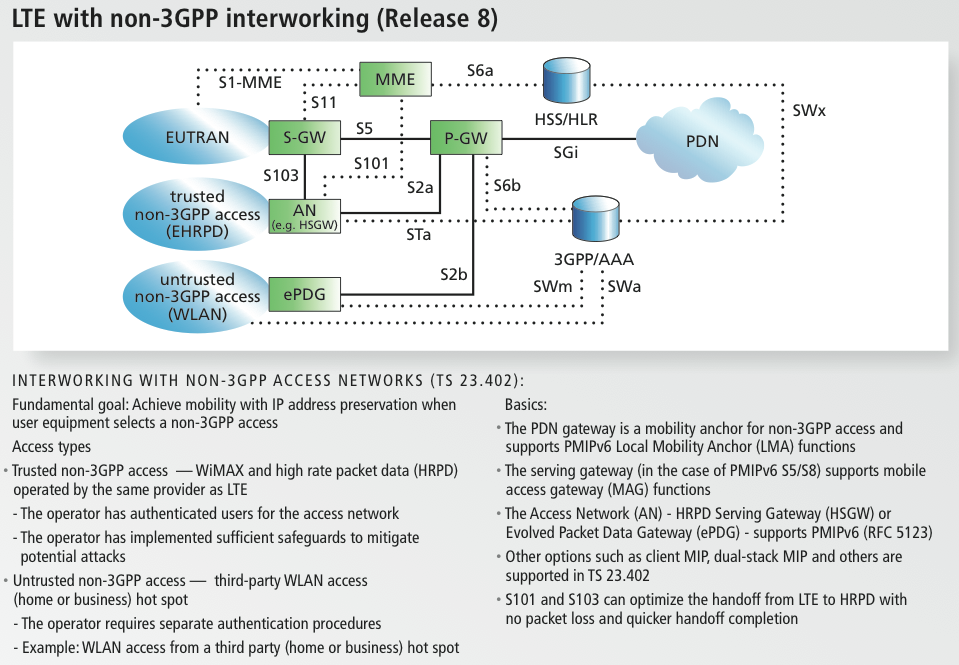 LTE Network Architecture with 3GPP2 Interworking, or very similar to how Verizon's
LTE Network Architecture with 3GPP2 Interworking, or very similar to how Verizon's
current LTE/EVDO network is architected. Source: Alcatel Lucent LTE Poster
Every LTE device gets a persistent IP address from the PDN Gateway at power on, which it keeps for the duration of its time attached to the network. Contrast that to UMTS where equipment is assigned a per-data-session IP address, though in practice it ends up being the same one for the duration of attach. Every component inside the evolved packet core has an internal IP address. To reduce idle-active time and signaling, there are fewer signaling states in LTE than even HSPA+ and much faster state changing. The result is a much simplified architecture that lets devices start transacting data faster and get into sleep quicker, which means lower latency. It’s a network architecture completely designed around delivering data throughout the network efficiently.
I mentioned earlier that there’s an obvious emphasis in almost all the new 4G networks on data first, voice second. That’s primarily a result of the fact that data use has passed an inflection point and continues to explode, whereas voice use has remained relatively constant. As a result, there’s no actual voice support in 3GPP Release 8 (the current LTE deployment). Voice support only comes in Release 9. As an aside, only 3GPP Release 10 enables LTE Advanced which fulfills those ITU rules that originally defined “real” 4G (100Mbps mobile, 1Gbps stationary).
Further, voice on LTE doesn’t really exist right now even in VoIP form because handover in practice isn’t entirely perfect. There’s an odd second or so long pause that happens sometimes as the data session context is transferred from eNodeB to eNodeB (or back to the serving gateway, then across), though in practice handovers should be around 50ms. Remember that in LTE, all handovers are hard handovers. As network deployment continues, base station and equipment manufacturers will no doubt make handover more and more refined and networks will begin to be robust enough for VoLTE to make practical sense. For the immediate future, however, voice still will require a hard handover to 3G UMTS in the 3GPP camp, or 1x voice on the 3GPP2 camp.
In the current deployment, incoming call signaling happens on LTE to the handset, the phone does a hard handover to 3G for the call to take place, and after the call is finished the handset hands back up to 4G. Verizon’s 4G LTE deployment uses good ‘ol 1xRTT for voice, and 3GPP camp UMTS network operators (like AT&T) will have devices fall back to 3G UMTS or even 2G GSM for voice. The HTC Thunderbolt is a special case since it has an interesting dual modem architecture that enables simultaneous 1x voice on one modem (the baseband on the MSM8655) and 3G or 4G data on another baseband (MDM9600).
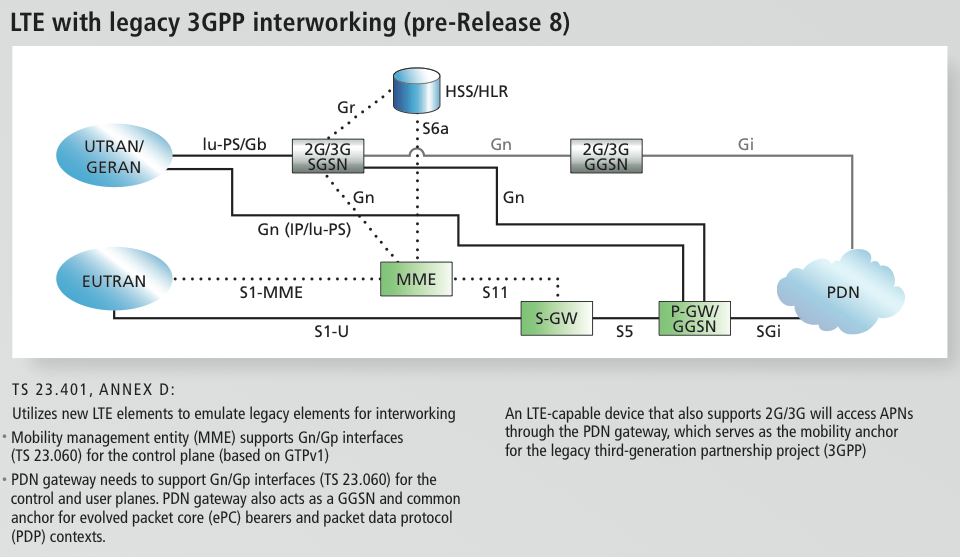 LTE Network Architecture with 3GPP Interworking, but pre-release 8, or very similar to
LTE Network Architecture with 3GPP Interworking, but pre-release 8, or very similar to
how AT&T's initial LTE architecture might look. Source: Alcatel Lucent LTE Poster
I guess that also serves as a decent segue into how data coexists with 3G networks in a 4G LTE network. Since LTE is a 3GPP camp technology, the situation is relatively simple for earlier legacy 3GPP networks. In such a mixed environment, UTRAN (from WCDMA) coexists with EUTRAN from LTE through some emulation at the mobility management entity. Access to the internet happens through the PDN gateway for both legacy network access and LTE 3GPP. This is how AT&T and most of the world’s carriers running GSM/UMTS/LTE will initially deploy. As things evolve and the 3G side of 3GPP also gets updated to Release 8, there’s better native support for UTRAN and EUTRAN to both maintain their own respective connections without a PDN gateway.
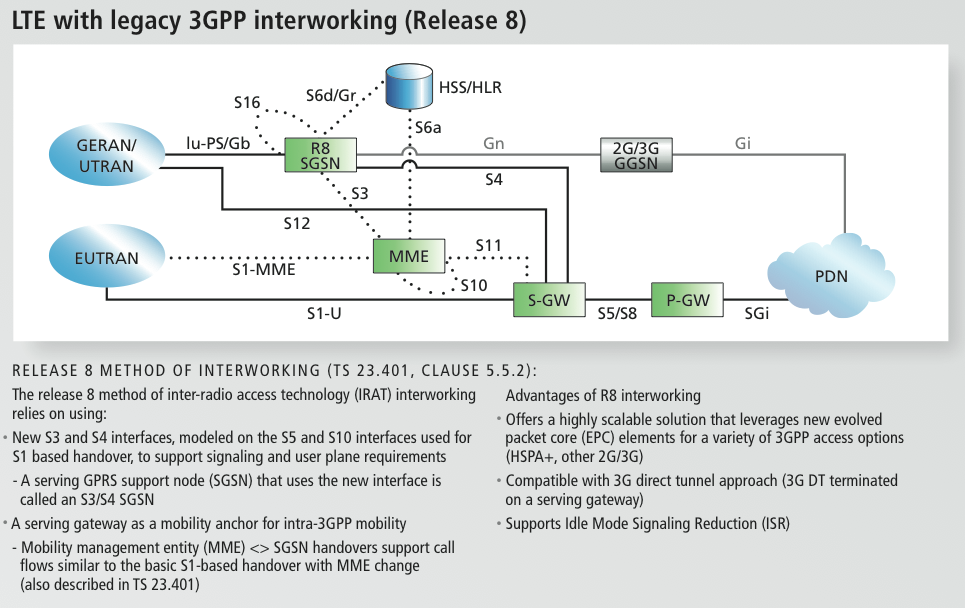 LTE Network Architecture with 3GPP Interworking, but pre-release 8, or very similar to
LTE Network Architecture with 3GPP Interworking, but pre-release 8, or very similar to
how AT&T's initial LTE architecture might look. Source: Alcatel Lucent LTE Poster
On the other side of the spectrum is how Verizon and other 3GPP2 camp networks will deploy LTE. This is what we tested and what’s already out in the wild right now. The situation here is a bit more interesting since the network architecture has to be able to hand data sessions from LTE back to EVDO/1x and maintain IP addresses and data sessions across both. To do so, it uses EHRPD (as opposed to HRPD—High Rate Packet Data used in EVDO). Again, all this really means is that traffic from both LTE’s EUTRAN and 3G EHRPD are anchored to the internet through the PDN Gateway.
To make 3GPP and 3GPP2 coexist, publicly routable IP addresses are no longer assigned directly to clients. The result is that clients don’t get their own truly public IP address. The downside then becomes that clients can’t run servers of their own. That’s great for carriers trying to enforce their subscriber contracts, but terrible for end users trying to use LTE for applications that require them—VoIP, VPN, and matchmaking based multiplayer games are easy examples. You can make a trade off and still use HRPD with routable IP addresses on most modems, but LTE and the default coexist 3G/4G modes on user equipment mandates EHRPD.
The last part of the puzzle is what speeds are like, in theory. This is a bit more complicated since LTE includes support for a variety of different channel sizes (1.4, 3, 5, 10, 15, and 20MHz) in both TDD and FDD modes and user equipment categories (with different MIMO and modulation scheme) support. As a result, what maximum theoretical speed is truly the right one depends on how much spectrum carriers support in each market, and how fancy of a device you have. LTE only really shows speeds way beyond 3G when given wider channels, if you assume the same set of features (higher order modulation schemes, MIMO, etc.) right now.
Verizon as mentioned earlier is currently running 10MHz channels FDD, AT&T is trying to acquire enough AWS to enable 20MHz channels, and Clearwire has enough spectrum up between 2.5 and 2.6GHz for 20MHz FDD which they’re currently already running trials of in Phoenix. I’d love to test that out.
All of Verizon’s launch LTE devices we’ve tested are built around Qualcomm’s MDM9600, which is a category 3 device with 2x2 MIMO and downlink beamforming.
Only the LG VL600 is based on a different cellular baseband, LG’s own L2000 chipset for LTE and the MSM6800A for CDMA2000/EVDO. In Verizon’s open access specifications, it notes that all 4G LTE devices are category 2 or 3. In addition, Verizon’s LTE deployment sits on 3GPP band 13, which again uses 22MHz of FDD paired spectrum in the upper C band. That works out to two 10MHz channels allocated for uplink and downlink. For comparison, AT&T currently has mostly lower B licenses, with some markets having both lower B and C.
As a result, the correct maximum theoretical downlink speed for Verizon LTE is really 73Mbps down and 36Mbps up for category 4 devices, and 50Mbps down, 36Mbps up for category 3 devices on Verizon’s 4G LTE.
Of course, those two speeds are achievable only in best case signal environments with two spatial streams. In reality, real world speeds will be lower as we’ll show shortly. That said, the speed gains still are an order of magnitude above the current state of 3G speeds. In addition, it seems highly likely that carriers will initially shape traffic to simulate loaded cell performance and not create unrealistic performance expectations.
LTE also supports both IPv4 and IPv6. I was always assigned an IPv6 address on 4G LTE, but sadly didn’t test this enough to come to any definitive conclusions about it. On EVDO, only an IPv4 address is assigned. The IPv6 address that I was assigned did seem to be public.
Finally and importantly, Verizon’s 4G LTE implementation stores both USIM and CSIM data on their UICC. As a result, there’s no longer a need to call support, hand them an ESN, and wait to change between devices. I successfully took Verizon's preprovisioned SIM from the UML290 and stuck it in the Samsung SCH-LC11 hotspot, and immediately got online without any issue. I'd expect full device portability to be a non-issue between devices that attach to similar service plans. This is a huge feature if you intend to swap between phones a lot or are in a situation where sometimes a USB modem makes most sense, sometimes a hotspot.


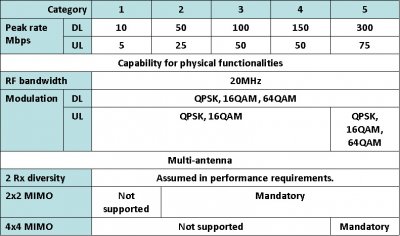
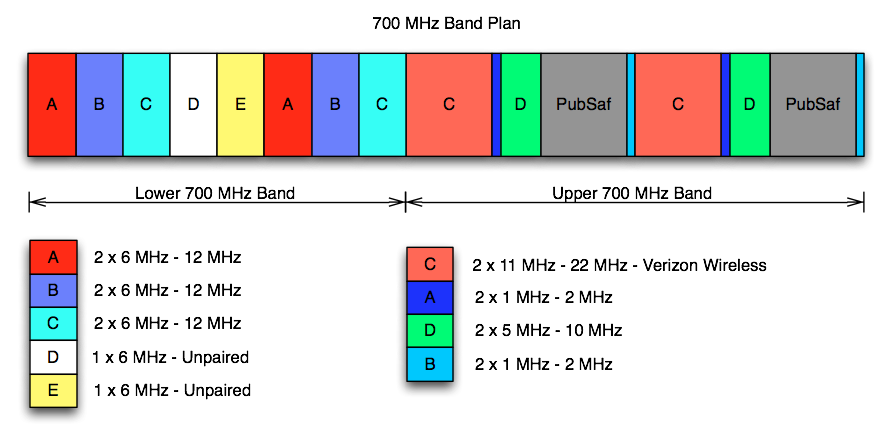
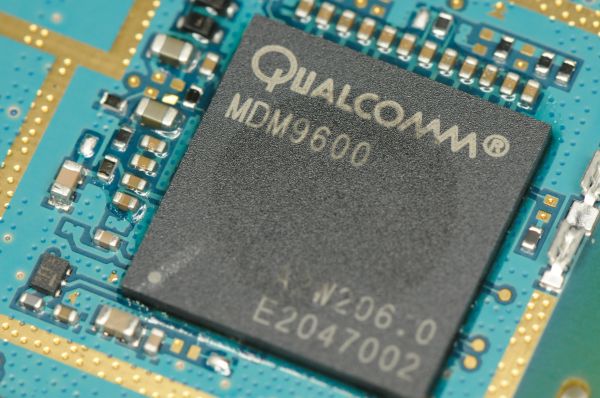
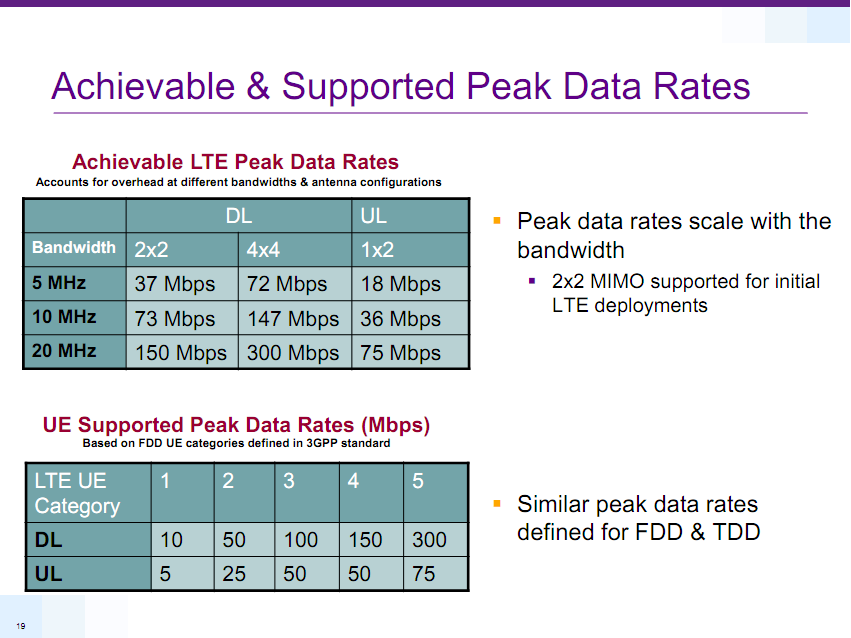
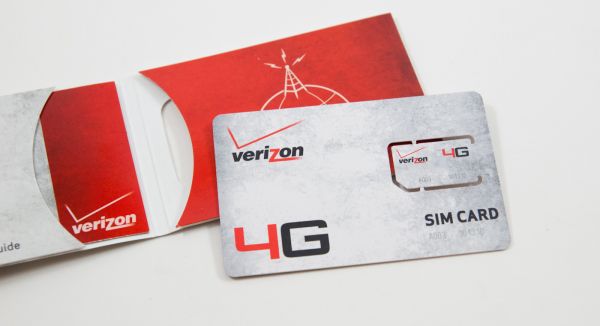








32 Comments
View All Comments
OctavioShaffer - Tuesday, November 13, 2018 - link
this very informative, i can now open my vpn server, through my Ip address 192.168.1.1. because recently i spend days just to search a to fix my problem. Thanks alot!strikeback03 - Wednesday, April 27, 2011 - link
I live in an LTE market and would be happy to accept some LTE devices if you don't want to be driving to Phoenix ;)For that matter I also have a Droid X with the stock 2.2 build.
Playing with a Thunderbolt at a Verizon store the data speeds are really quick. Will be interesting to see how much they drop off though with more users.
Penti - Wednesday, April 27, 2011 - link
They use 20MHz in 2.6GHz here in Sweden (few cities so far) so you can actually see speeds up to about 80 Mbits here, LTE-Adv on 800MHz is in the works of being deployed here now, but they will be using 10MHz spectrum. I'm guessing people in major cities will see 20-80Mbits and people in areas only covered by 800MHz will see 10-40Mbits. Latency is where it clearly matters though. Though 50 Mbits on 2x10MHz 700MHz is clearly at the top. It's not often you will see much of high speeds any way.To bad they pretty much price themselves out of the market though. A 16Mbit Turbo3G connection is less then half of what 4G costs here. For limitless traffic at least.
xp3nd4bl3 - Wednesday, April 27, 2011 - link
Love the graphing.mars2k - Wednesday, April 27, 2011 - link
Not good, I need USB tethering. This is a deal breaker for me. I need outside access in several places where wi fi is not allowed.Lord 666 - Wednesday, April 27, 2011 - link
Brian,Currently have an open ticket with VZW about the lack of public addresses. Have several LTE cards used with cradlepoints that are used for DMVPN backup connections and need public addresses. In testing, would randomly get nat'd address bring up a complete tunnel, but it was very rare. All of the IPs issued were 10.xxx in NYC.
Was told static public IPs will be available around May.
nerdydesi - Wednesday, April 27, 2011 - link
I'm curious on what you meant by this."Note that the Thunderbolt is a 2x1 device while the others are 2x2, which explains some of the upstream throughput distribution difference"
Do you mean that the other devices have more antennas than the Thunderbolt and thus why their speeds seemed to be faster than the Thunderbolt? Regarding the phone and its "unlimited data", I used 30gb in my last billing cycle and so far 70gb now with no peep from Verizon. It could also be that I'm currently a VZW employee. I hope that because I bought the phone, I can be grandfathered into the plan.
Also as a note, if you take the sim card from the Thunderbolt with its full voice and data plan and put that into a mifi or USB modem, you get the unlimited data as well. Just keep in mind you pay more per month due to having the voice along with it (which is useless on the modem devices), but still better than the current 5gb and 10gb caps. If you do vice versa, take the card from a modem to an LTE phone, you are charged for each minute of voice and each text unless you change your plan.
DanNeely - Wednesday, April 27, 2011 - link
" AT&T on the other hand has a sprinkling of lower block B and C licenses that are both 12MHz. AT&T also purchased Qualcomm's licenses to blocks D and E, which are both 6MHz unpaired, though it's not entirely clear how AT&T will integrate both blocks of unpaired spectrum. All total that gives AT&T between 24 and 36MHz of 700MHz spectrum, again depending on market."Since the only blocks that they own nationwide are the 6mhz D and E blocks shouldn't it be 12 to 36mhz of spectrum. Looking at auction maps it appears there're fairly large areas where ATT didn't win the A or the B blocks.
http://www.cellularmaps.com/700_auction.shtml
Brian Klug - Thursday, April 28, 2011 - link
That's a good point. If they can manage to either TDD or FDD both of those it should be 12 to 36. Just don't forget about the lower C block which was involved prior to this latest auction, that's the 24 that I'm thinking of.With 12 MHz of spectrum they can run 5 MHz FDD channels which really won't be much faster than current WCDMA systems. I guess that's why I mentally discounted it.
-Brian
Lothsahn - Wednesday, April 27, 2011 - link
I notice that with my Sprint aircard, I maintain the 3G connection even during extended trips across the nation. However, the 4G connection on the same aircard appears to be unable to handoff and loses its connection while traveling constantly. I find that my connection disconnects every 2-3 minutes when actually moving. However, if I'm stationary in a building, it'll maintain the connection for hours.What results did you have with LTE for these sorts of usage scenarios?